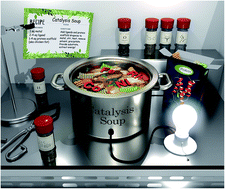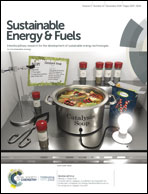Chicken fat for catalysis: a scaffold is as important for molecular complexes for energy transformations as it is for enzymes in catalytic function
Abstract
In order to enable the widespread use of renewable energy from sources such as solar and wind, the energy needs to be stored for use when the renewable sources are not productive. Small molecules such as H2, O2, H2O, and CO2 for example, are excellent storage systems. Nature has evolved machinery, in the form of enzymes, to facilitate these interconversions, allowing the storage and release of electrons when the organism needs to store or release energy. Chemical conversion by metalloenzymes is completed with high selectivity, low energy input, and high efficiency, all with earth abundant metals and under mild conditions. Although these catalytic properties seem advantageous for industrial use, there are inherent drawbacks to the use of metalloenzymes for industrial applications. However, they provide significant inspiration for developing synthetic complexes that could be implemented broadly. A recent approach in metalloenzyme design has been to focus not only on the atoms immediately attached to the metal, but also the protein scaffold around the active site which has a significant effect on enzymatic catalysis. By taking multiple approaches, the design principles of the protein scaffold are starting to be understood and the essential features required, as well as those not needed, are also being revealed. In this review, we will discuss the effect of organic/peptidic scaffolds, along with medium as an extension of the scaffold, and their varying impacts on catalytic reactivity of energy relevant transformations.



 Please wait while we load your content...
Please wait while we load your content...